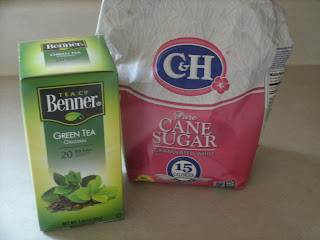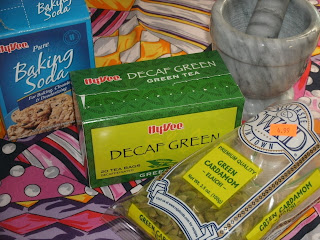Egyptian Karkade
Egyptian Karkade
I decided to start my exploration in North Africa, and the Middle East. According to several websites, tea is the national drink of Egypt, and is more popular than coffee. Black tea is the most common beverage, and is mainly imported from
Kenya and Sri Lanka. Black tea in southern Egypt is steeped in hot water for several minutes, sweetened with sugar, and often served with mint and milk. This tea tends to be a weaker brew. Black tea in northern Egypt is boiled for
5 minutes, and sweetened with a lot of sugar. It is said to be a black liquid. Green tea is available, but said to not be very popular.
I wasn't sure where this was going to go, so I kept looking. Then I found “red” tea, karkade. The first time I read about it, it was said to be enjoyed at special occasions like weddings. After perusing some videos on YouTube, and finding some other food blogs, I found that it is rather popular as a daily drink as well.
I wasn't sure where this was going to go, so I kept looking. Then I found “red” tea, karkade. The first time I read about it, it was said to be enjoyed at special occasions like weddings. After perusing some videos on YouTube, and finding some other food blogs, I found that it is rather popular as a daily drink as well.
This is an herbal “tea”, rather than one using tea leaves. I chose it because when researching tea of the Middle East, it was mentioned unique to Egypt (or at least the most popular in Egypt). While I thought the
United States was the only country where iced tea is enjoyed, I discovered that hibiscus tea is popular both hot and iced in Egypt. That is why I tried it both ways.
I found one or two blog posts about how to make this tea, along with several videos on YouTube. Since I’m not strict recipe person (pretty much any recipe is just a suggestion),
I threw together a pot of tea to try it out.
The ingredients I used:
3 cups water (750 ml)
3 tablespoons dried hibiscus flowers
fresh ginger, chopped
Other add ins I have seen listed for this tea include sugar, honey, orange blossom water, mint (steeped for a minute after the tea is removed from heat), lemon, and vanilla (vanilla
without alcohol for those who want their drink to be halal compliant). Apparently there are also 2 different types of hibiscus flowers one can get for making tea. Light, or dark. I got what they had at the store, so I really can't say I've seen the 2 varieties side by side to know the difference. I found my dried hibiscus in the bulk spice section of the grocery store. You can also find bags of hibiscus at Middle Eastern grocery stores if you have them available.
Bring your water to a boil, and add your hibiscus flowers and ginger. (note, one video did show someone rinsing their hibiscus flowers before using them - your call. Mine were organic, so I decided not to worry about it since rinsing does take away a bit of the flavor and color.)
Simmer for 5 minutes, then remove from the heat and let it sit to cool a few minutes. Some instructions for iced tea state to leave the flowers in while you chill it, and strain
them out when ready to serve. After several minutes I decided the tea smelled plenty strong, and I better strain it.
While I show the setup on the kitchen counter, I did it over the kitchen sink because this stuff stains.
This was my second attempt at making this tea. My first attempt was a bit lighter in color, and more mild in flavor (it was just hibiscus without any ginger). I decided to use
more for this trial because a lot of the recipes for this tea call for a lot of hibiscus flowers (like 1-2 cups for half a gallon of water).
First I tried it hot.
It is strong. I’m also one of those stubborn people who doesn’t like to put sugar in my drinks. Thankfully, I like tart foods anyway. While I didn’t add any lemon to it,
I thought it had a lemony flavor. Hibiscus is high in vitamin C, so that would explain the flavor. When I plan to drink it hot, I will use probably 1/2 to 1/3 of the amount of hibiscus I used this time.
Then I put it in the fridge overnight.
I don’t normally drink cold beverages unless it is really hot out, so I had to make some ice first. As luck has it, we were having record high temperatures for mid-June, so it was a rare time when an ice cold beverage was a welcome drink. I definitely made an iced tea strength brew. When it is cold, it is tangy and refreshing, not overpowering. The ice cubes will also dilute it a bit, if you wait long
enough.
Bonus picture:
I was amused by how the camera decided to focus on the reflection of the tree on the surface of the tea, rather than the cup of tea itself.











That last picture is pretty. Of course, if you'd TRIED to get it to focus on the reflection, it never would have worked.
ReplyDeleteOf course. I really wonder about my camera sometimes. It can't figure out how to focus on things, and my phone will take a perfect picture of the same thing.
Delete